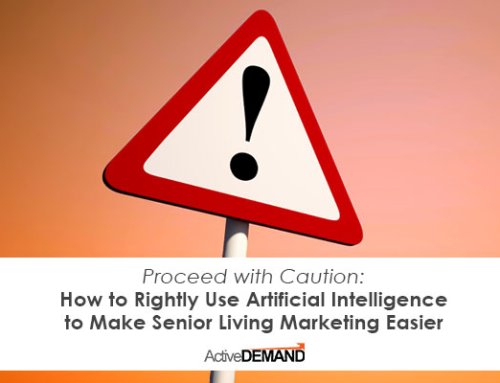Automated Personalization and the “Zero Moment of Truth”
Google coined the phrase “Zero Moment of Truth” five years ago in an attempt to describe the moment someone decides he or she wants or needs something. The buyer’s journey, meanwhile, continues along a series of “micro-moments” or activities towards that end goal – i.e. online research, visiting review sites, comparing vendors, videos etc. – and into this mix has come automated personalization, which ensures marketers are making the most of these “micro-moment” engagements.
Here’s what marketers need to know: This whole movement around “Zero Moments of Truth” is based on the notion that people will connect with brands when the content and timing is relevant. This ZMOT phenomenon can be categorized in two ways: The ‘predictive MOT’ at the beginning of a sales cycle, and the ‘final buy MOT’ at the conclusion; we could be using analytics more strategically with all the other moments in the middle – and all that nurturing that must occur along the buyer’s journey. This can all be considered a more targeted, personalized form of data-driven content marketing that also helps build that individualized experience of the brand for each customer.
To put it succinctly, the “Zero Moment of Truth” refers to the movement in the purchase cycle between the STIMULUS (elements such as advertisements, which inform shoppers that there may be a product they’re interested in) and FIRST MOMENT OF TRUTH, a term used by Proctor & Gamble which typically refers to the actual decision to purchase. The most important lesson that marketers need to walk away with regarding the “Zero Moment of Truth” is that they must be aware of it – regardless of whether they’re in the B2C or B2B sector. If your clients are AVAILABLE at the “Zero Moment of Truth”, their customers will find them at the exact moment they’re thinking about buying, in addition to when they’re CONSIDERING thinking about buying.
Here are some ways you can make sure your marketing efforts pass the ZMOT test:
- Ensure information about your client’s product is readily available through such measures as customer testimonials, buyer’s guides and case studies.
- Focus on optimization for all versions of your clients’ websites, desktop and mobile; most product research starts as an online search, be it on a computer or phone, so it’s important for your site to be optimized for SEO.
- Think A LOT about video – do you think it’s any coincidence that YouTube is the second-most popular search bar on the Internet? Consumers are looking for visuals today to help them decide, and for B2B marketers this means incorporating product demos and webinars into their strategy.
In preparing for the “Zero Moment of Truth”, putting a strategy in place should not significantly change your current marketing tactics. But it is definitely important to be aware of what information consumers require during this process, and how easy (or not) it may be for them to access it.




